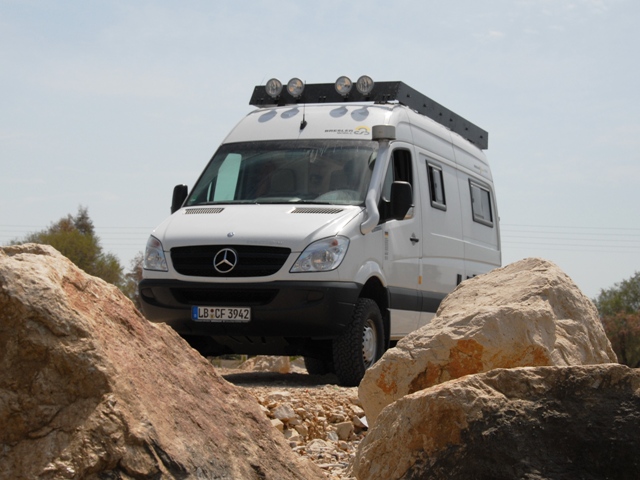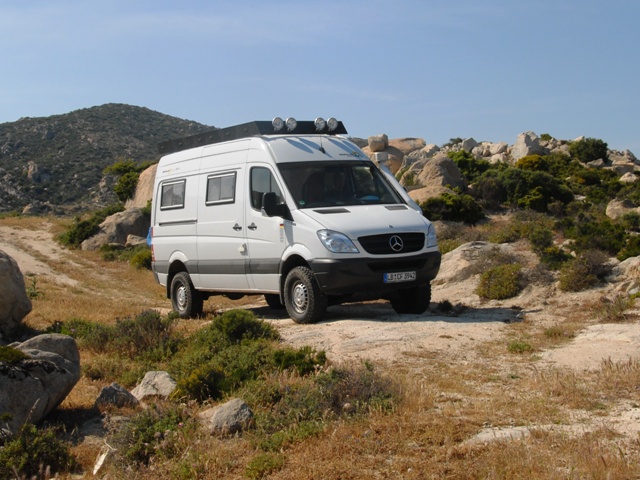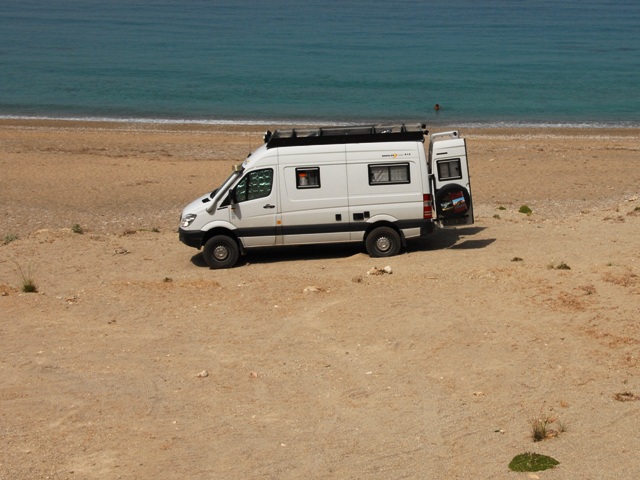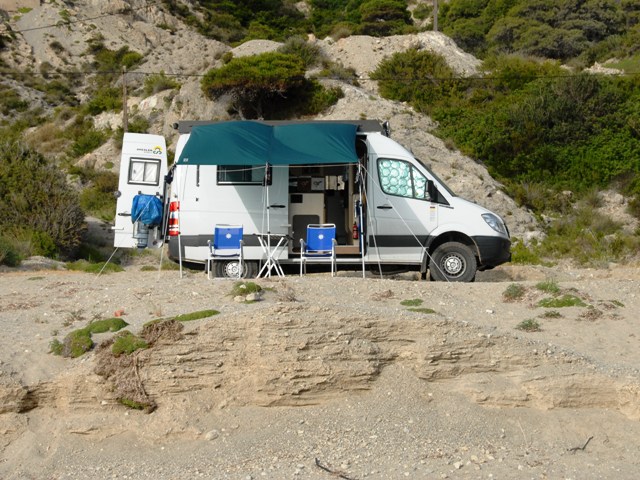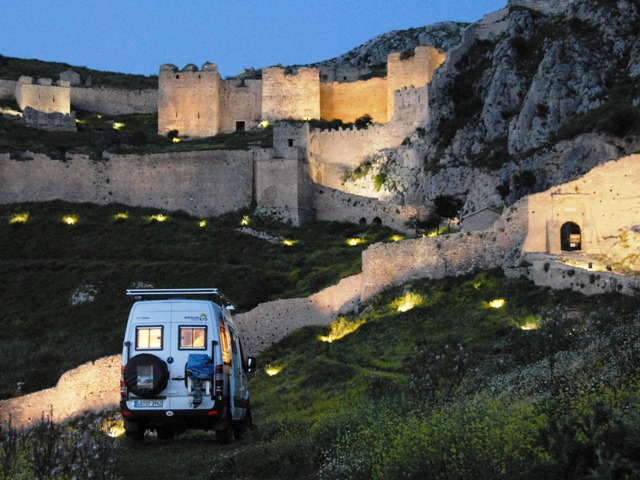With a cold box, toilet and camera: cfb - in - motion
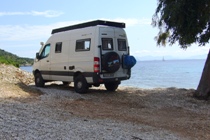
Mr Böttger records his experience with caravans, and of course also his experience with IGLHAUT all-wheel caravans, in his books:
Mit Kühlbox, Klo und Kamera: Vergnügliches und Nützliches aus über 40 Jahren im Reisemobil" and "Südafrika im Reisemobil: Entdecker-Touren durch das faszinierende Land der Regenbogen-Nation".
Follow Mr Böttger's activities online at www.cfb-in-motion.com.
Mr Böttger has provided us with a small excerpt from "Mit Kühlbox, Klo und Kamera..."..
Have fun reading!
Between vines and sheds.
The idea is as simple as it is ingenious. Nevertheless, or maybe specifically because of this, it was put into practice in France rather than in Germany. It happened like this: Pierre Ginoux, the editor of a specialist magazine for winegrowers in Carpentras in Provence, was always travelling the vineyards of his readers with his motorhome. He always found generous parking places of the kind he would have liked for his holidays as well. On one such tour, he had a great idea: winegrowers have lots of space. They are always looking for customers. Motor home users are looking for peaceful parking places in a nice landscape and are often looking for a good bottle of wine. All you need to do is bring the two groups together. That would be a win-win situation.
It wasn't quite that simple. There were a few laws in the way of putting his idea into practice – in this case the rules for the hospitality business. Hard as it is to believe, but at times even the people of Southern France will subject to bureaucracy. In contrast to other peoples, they seem to continually think about how to legally circumvent laws. Ginoux did the same, until he finally had a brilliant idea: invitation. If the winegrowers were to personally invite the motorhome travellers, the laws about the hotel business would not apply. The motorhome travellers would come in as private guests, would be allowed to spend the night for free but would surely in return to participate in a wine tasting and buy a bottle or two for their further travels. France Passion had been born.
At first, only the winegrowers from Provence joined the network. Later, Ginoux spread his system across France, finally also including farms. In spite of this immense expansion, France Passion hasn't changed at heart. A motorhome traveller can purchase a brochure that lists all the participating vineyards and farms with their address, instructions on how to find them and a short description of the parking places. The last kilometre before the vineyards is usually marked with France-Passion arrows. Once there, he shows his personal guest card and a car sticker. That's it.
We first took a tour through the vineyards of France Passion in 1994 – the second year of its existence. To start out, we had a memorable interview with founder Pierre Ginoux in Carpentras. Then we visited many different vineyards in Provence, Bourgogne and in Alsace, which gave us memorable experiences. The proximity to the owners was particularly fascinating to us.
At times, it was incredible; we were usually welcomed and taken in like old friends. Our craziest experience happened on a small vineyard near Besançon. We had just parked our motorhome between trees at the edge of the property and were going to just introduce ourselves and register. Before we realised what was happening, we were sitting in the middle of a birthday party. The owner was celebrating his sixtieth birthday and had invited his extended family. After a great welcome, we ended up between a sister from Lyon and a grandson from Paris and were heaped with food and wine. It was to be a long night in this merry round.
Something entirely different happened a few days later in the area around Orange and Mont Ventoux. We spent the night on a huge gravel-covered parking place in front of an impressive, awe-inspiring Château that would have easily offered space for ten travelling buses. Judging by the sizes and elegance of the modern glass sales pavilions, they probably also brought their freight here for a wine tasting every day during the main travelling season.
We will remember another vineyard in the region for its narrow entrance between two columns with stone lion's heads and its owners, who were nobility. When we were trying to take a picture of the two and their fine greyhounds on the open stairwell at least twenty metres in width, I had to place them very carefully to keep the thirty-centimetre-tall weeds growing between the stone plates out of the picture.
Young, dedicated, the lady wearing jeans and a headscarf, another winegrowers' couple showed us their small vineyard that night and invited us to a wine tasting in an attachment to their house that was hardly larger than a double garage. That was a single exception, though. Most vineyards covered immense areas, had long drives between the gate and buildings, and offered generous parking areas. Once, we almost stood between the vines, another time we were next to the tool shed, then again right next to the Château.
Sometimes, we were offered electrical power or allowed to use the vineyard's washrooms and toilets. At all times, we experienced disarming cordiality and hospitality. Usually, we weren't only shown the vineyards, the estate and the cellar, but even the private rooms in the Châteaus, even if we did not accept the offer for taking wine, sometimes in connection with a dinner. It was also very nice that no one tried to pressure us to buy wine. Nevertheless, we bought between three and six bottles at every stay and put them in the shower. We won't tell how long it took us to drink them all.
A vineyard near Montpellier impressed us most during this tour. Its cellar wasn't, as usual, underground. Its huge oak casks were placed in the side aisles of a Gothic cathedral that looked like it could have easily stood in Avignon or Strasbourg as well if going by appearance and size.
It was incredible, hardly imaginable. We drive across natural tracks, through trees, bushes and reeds from the vineyard to a peninsula. And there it suddenly was, this huge building with a dense forest growing around it. The vintner opened the four-metre-high portal with a medieval key the size of a man's hand, opened the groaning door, and we entered this incredibly high cathedral. Pale light was falling through the altar window in rays as the great painters have drawn them when depicting the resurrection of Christ. This light was falling into an entirely empty cathedral, though. There was nothing: no altar, no pulpit, no benches, no church pews, no mosaic floors - nothing.
We didn't see them until we walked, awe-struck, across the dusty, beaten-down clay floor to the side aisles. Step by step, the outlines of the wine casks, up to six metres high, appeared out of the gloom in front of the side-aisle windows that had been painted shut.
And suddenly, the vintner's voice brought us out of this wonderful, grotesque and fascinating mood. We were still somewhat absent-minded when listening to the sober and busy explanations of growing wine in general and the specialties of this Château in particular.


